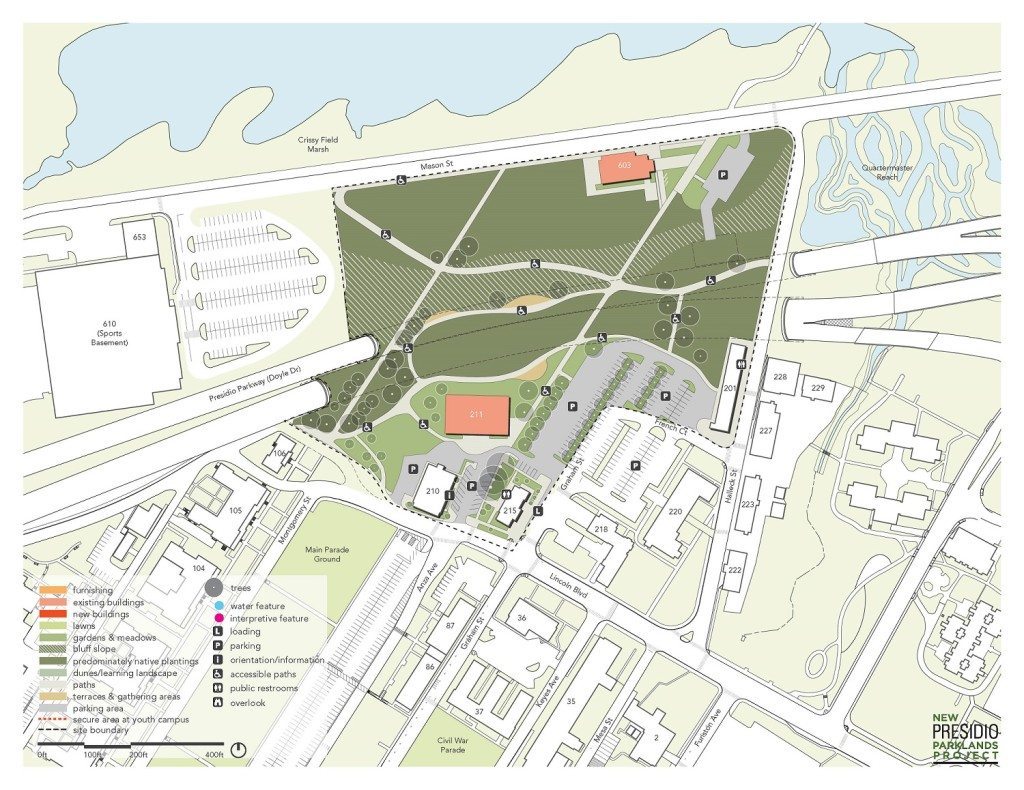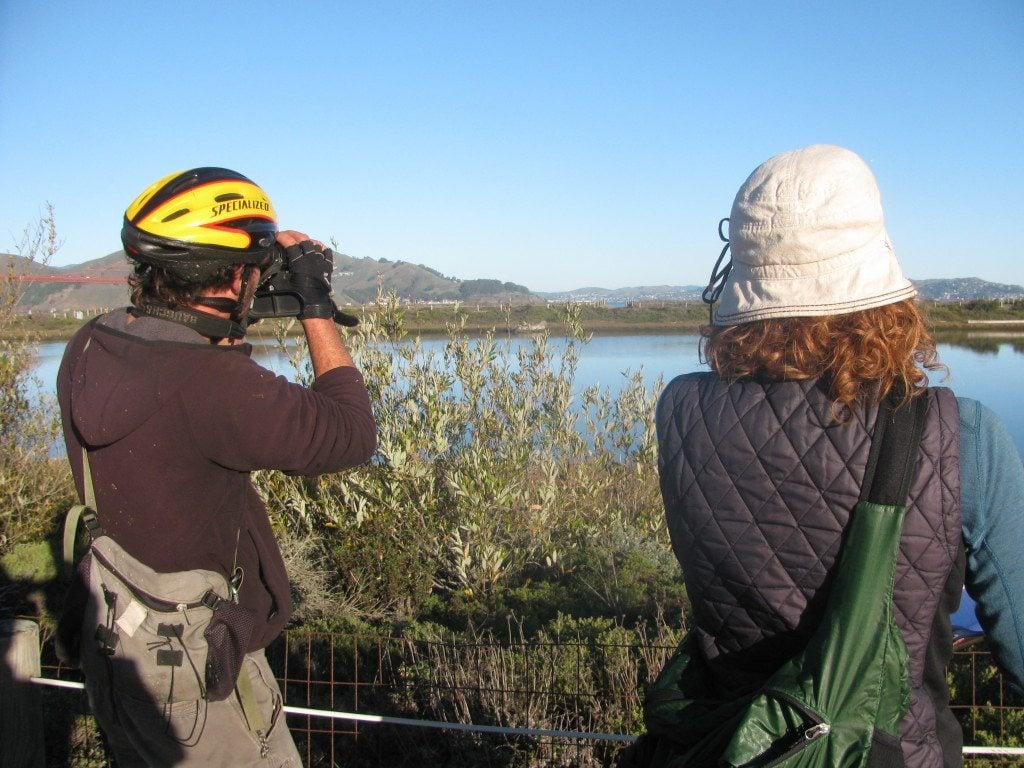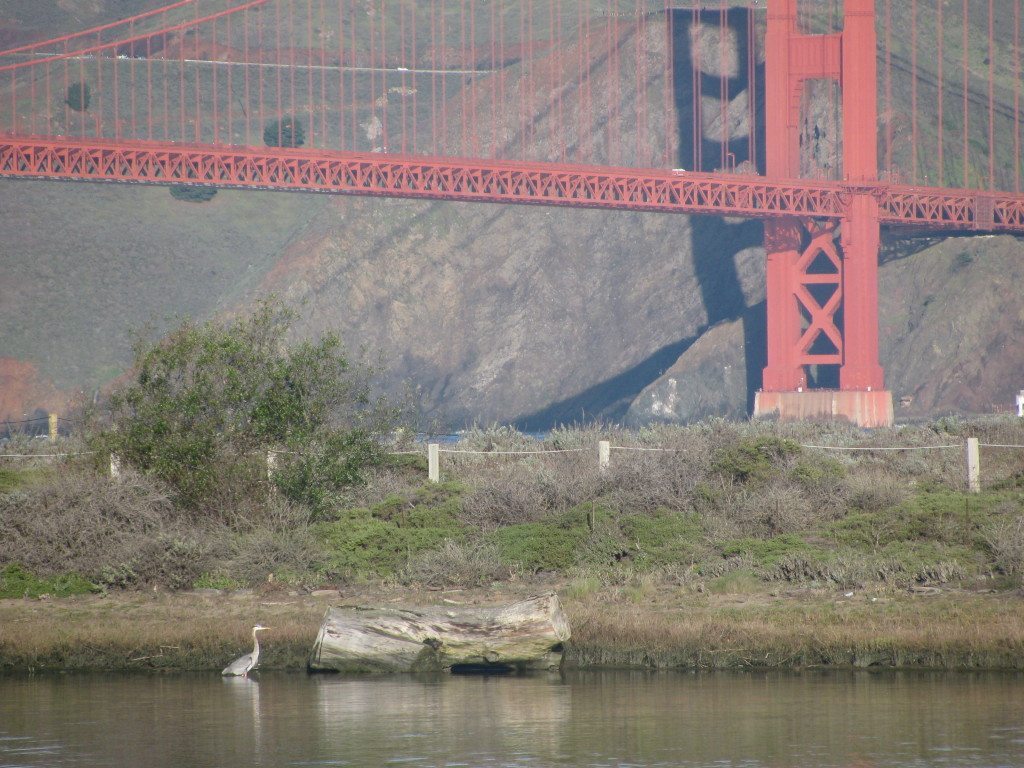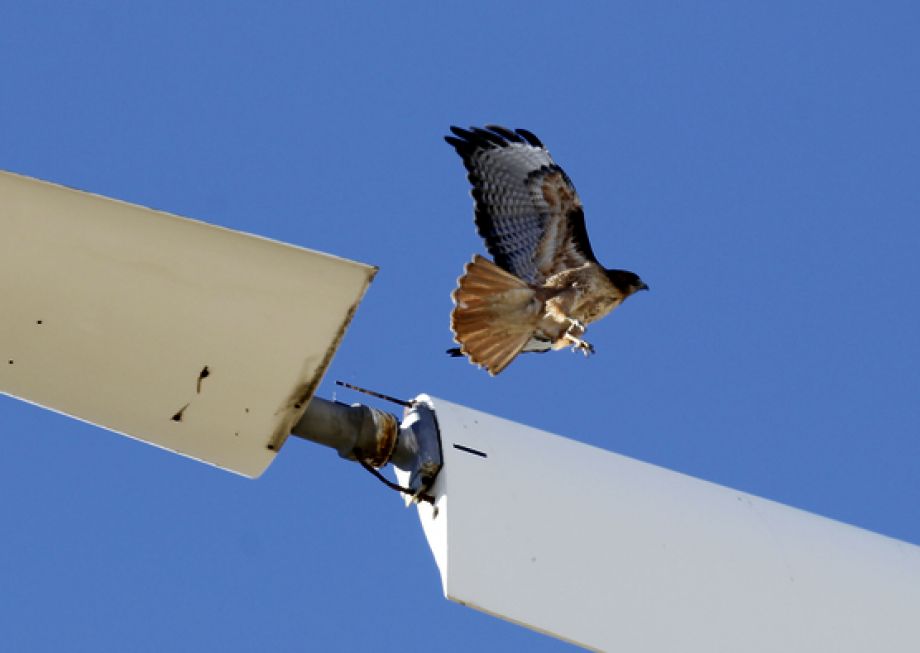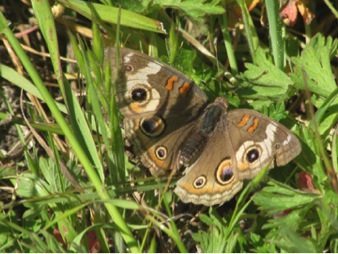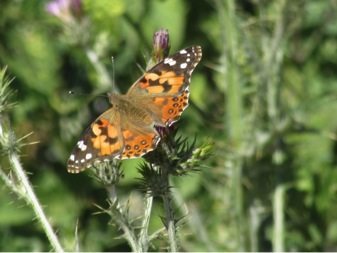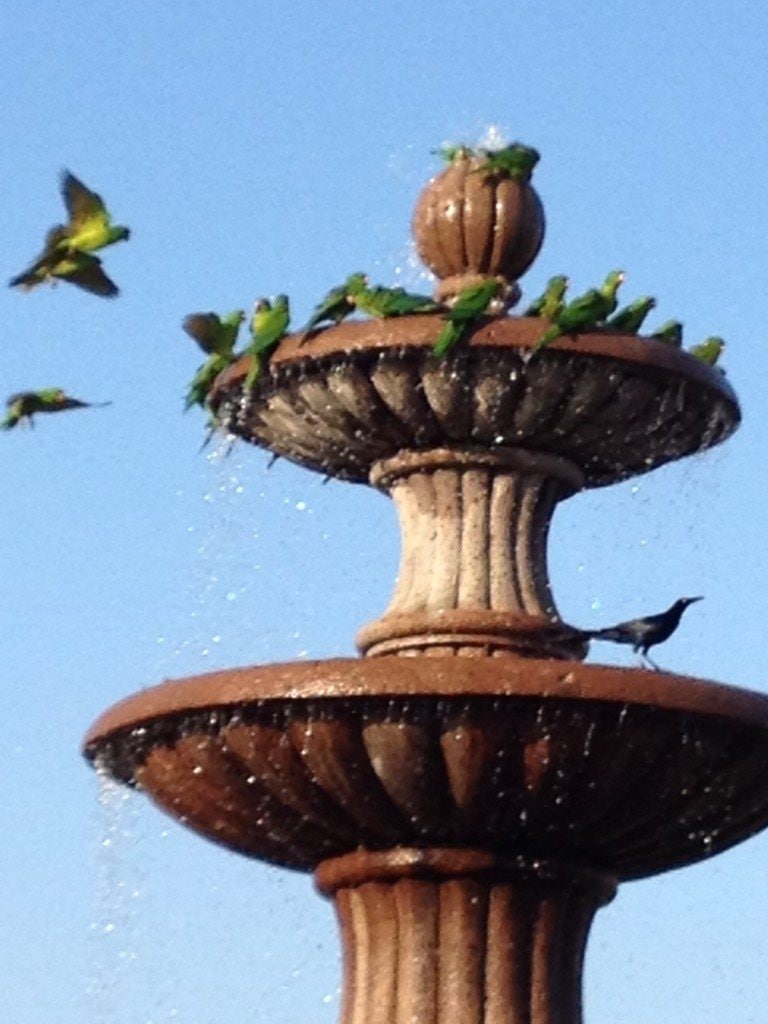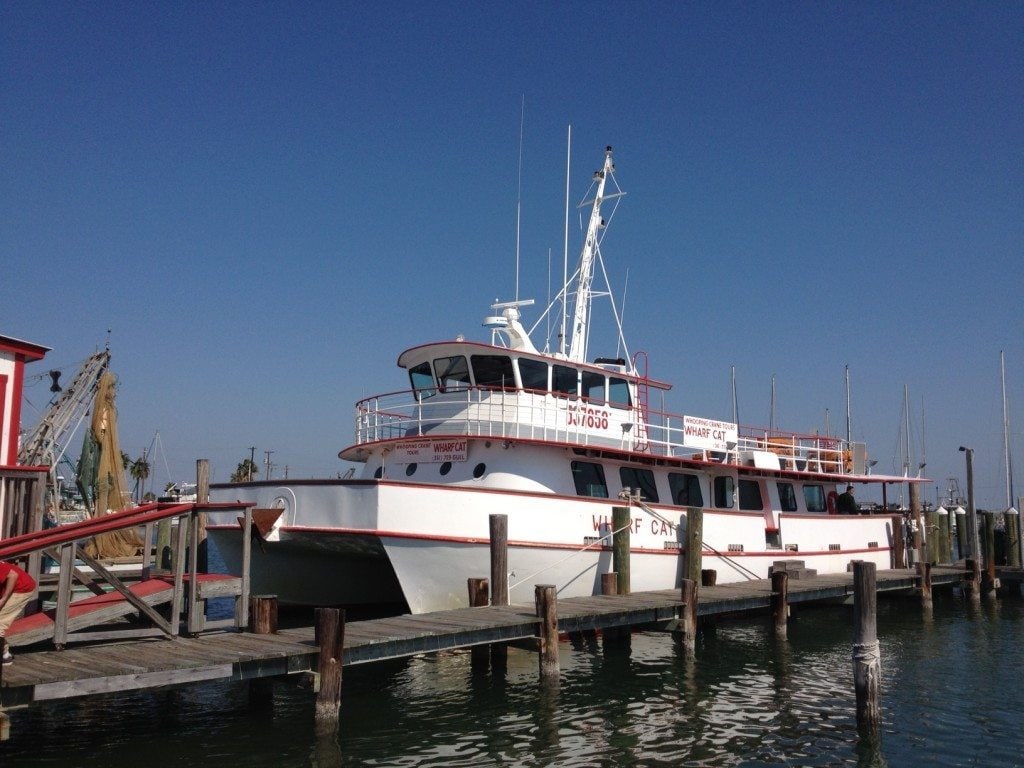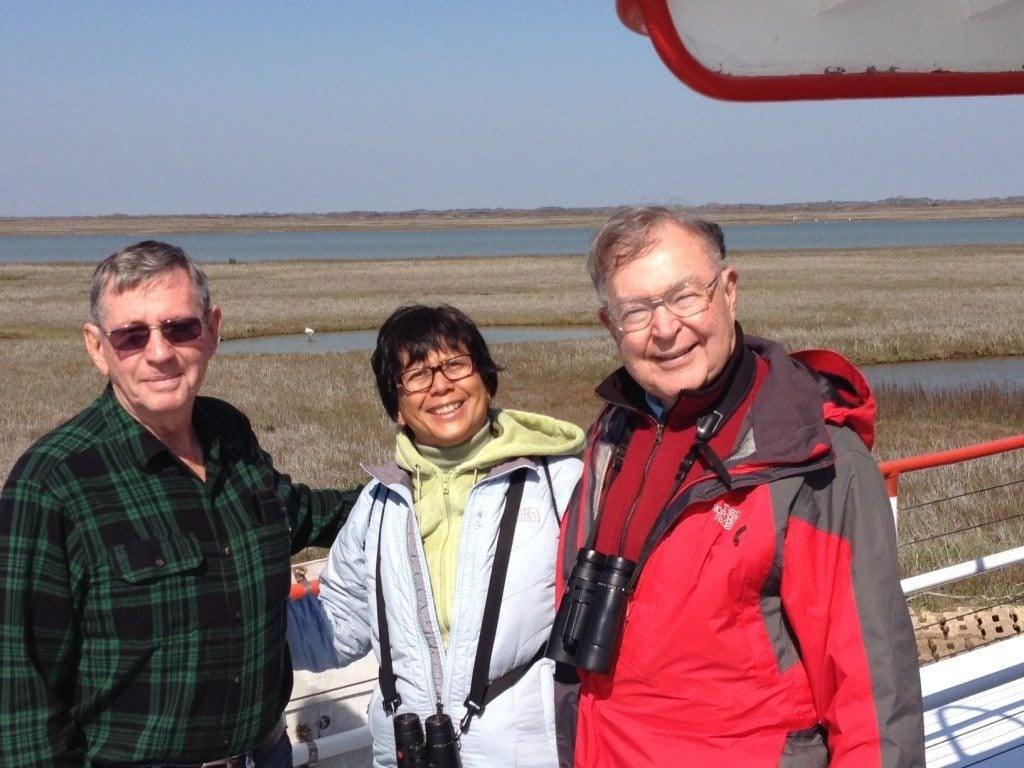From nursing birds to painting them
By Ilana DeBare
Maggie Hurley’s relationship with birds began as a child in Southern California. When she found injured birds, she’d put them in a shoebox and try to nurse them back to health. Some veterinarian neighbors of hers opened a wildlife rescue center and she would visit with pelicans in their backyard and songbirds in their garage.
Today Hurley’s own studio is also filled with birds — but of the painted variety.
Hurley, a Berkeley resident, will be our featured guest artist at Golden Gate Bird Alliance’s 2015 Birdathon Awards Celebration on Sunday May 17.
Her work includes both paintings and prints. Some of her most popular pieces are brightly-colored portraits of birds on four-inch square wood blocks.
One of the things that makes her work unique is the sense of whimsy and personality she brings to each bird.
“I’ll enlarge the eyes a little bit or do something to make it more charming,” she said. “I appreciate all the people doing Audubon-style illustration, but I like to give it a little more ‘oomph.’ I’m not trying to capture birds scientifically, but find a relatable expression on a face that shares so little with humans.”
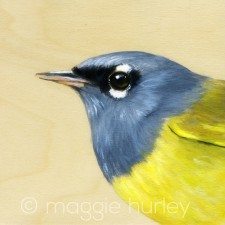 MacGillivray’s Warbler by Maggie Hurley
MacGillivray’s Warbler by Maggie Hurley
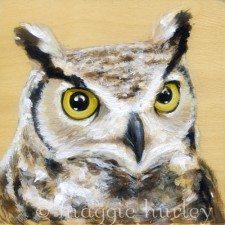 Great Horned Owl by Maggie Hurley
Great Horned Owl by Maggie Hurley
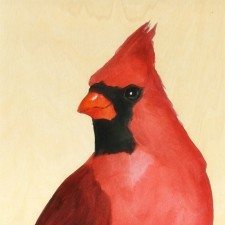 Northern Cardinal by Maggie Hurley
Northern Cardinal by Maggie Hurley
Another of Hurley’s trademarks is her commitment to creating art that is affordable to all kinds of people. Her original paintings sell for as little as $80, while the wood block prints sell for $40.
She recently launched a subscription service called Bird in a Box, where for just $25 subscribers receive a new bird wood-block portrait each month.
“It’s a nice alternative to opening your mailbox and finding junk and bills,” Hurley said. “Plus it will force me to paint one new bird every month.”
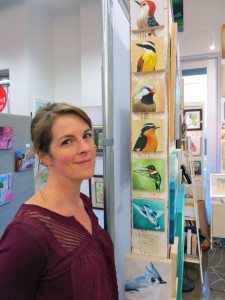 Maggie Hurley with some of her wood-block prints in her Berkeley studio / Photo by Ilana DeBare
Maggie Hurley with some of her wood-block prints in her Berkeley studio / Photo by Ilana DeBare
Hurley, who attended the Laguna College of Art and Design, slipped into painting birds almost by accident. As relief from a long, drawn-out argument with a boyfriend, she started doodling in her sketchbook and discovered she had made a little cartoon-like owl. Later she turned that owl figure into a character in a children’s book.
“From painting him, I thought, ‘Maybe I should try painting a real owl,'” she said. “People responded well, so I branched out. Now I ping-pong between my whimsical Herbert the Owl and bird portraits.”…



